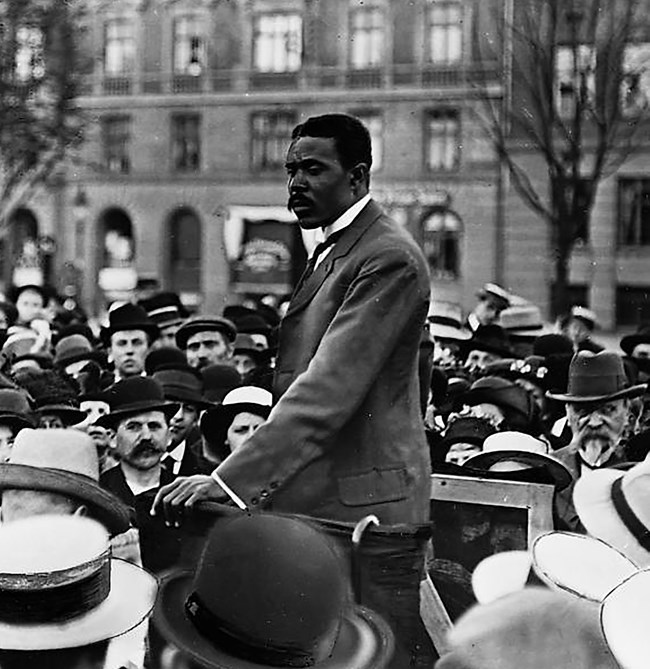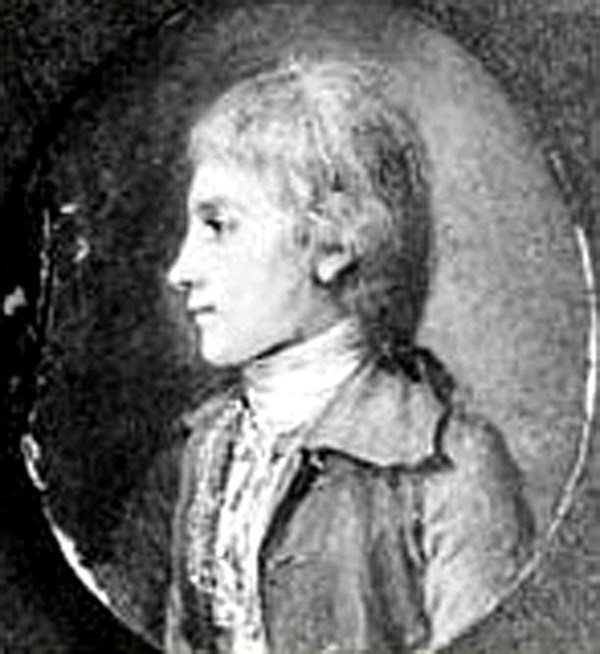
Image courtesy of the Danish Workers Library and Archives. Born on September 28, 1884, David Hamilton Jackson grew up in Christiansted. Baptized a Moravian, was raised by a family of teachers and former slaves. He became a teacher himself, at both East Hill Country School and later in Frederiksted. He studied law at the University of Chicago, and took an interest in social, political, and economic issues of the Danish West Indies. Jackson was an important figure in the struggle for workers’ rights and civil rights in the Danish West Indies. In 1915, Jackson helped organized the first labor union on St. Croix, which sought to use organized protest and dialogue instead of violence to create better working conditions and higher wages. He led a strike by farm workers that resulted in the reduction of the work day to 9 hours, and a raise in wages. Later that year he was selected by the union to go to Denmark and present their case to the Danish parliament and King Christian X. For three months he met with the king, politicians, the press, and the people of Denmark. Jackson was regarded as a trouble maker by the business community, but he was successful in improving both worker’s wages and their working conditions. Jackson also successfully protested for the freedom of the press. Since 1779 all newspapers were subsidized by the Danish government. Upon his return from Denmark he established the first free press publication on St. Croix, The Herald, on November 1, where he served as editor. The office was located at 1B Kongens Gade (Kings Street), across the street from the Danish West India and Guinea Company Warehouse. After the sale of the Danish West Indies to the United States in 1917, Jackson served on the Colonial Council of St. Croix (1923-1926), and on the Municipal Council of St. Croix (1941, 1946). From 1931 to 1941 he served as a judge, and was instrumental in the drafting of the 1936 Organic Act. He was also the first chairman of the St. Croix School Board. Jackson died on May 30, 1946. Jackson’s efforts to improve the lives and working conditions of the people of the Virgin Islands had lasting impacts. His life serves as an example that no matter how humble your beginnings, you can achieve success through hard work and dedication. Today, November 1 is David Hamilton Jackson Day. 
U.S. Library of Congress The story of the youth of one our country’s greatest founding fathers is based here, in Christiansted. Born on the island of Nevis, Alexander Hamilton is the quintessential American story, rise from poverty and tragedy to international greatness. But his family’s ties to St. Croix, and to the buildings of Christiansted National Historic Site, go back 10 years before his birth. Alexander’s mother, Rachel Faucett, arrived on St. Croix with her mother in 1745. They were visiting her sister, Ann, who lived on an estate with her husband James Lytton and their children. Within a year Rachel, just 16 years old, was married to Johan Michael Lavien, and a year later she gave birth to a boy. However, within five years the marriage was over. Lavien had his young wife incarcerated in a cell in Fort Christiansvaern, in order to teach her a lesson in how to behave like a proper wife. The lesson backfired; as soon as she was released, she left the island with her mother for St. Kitts. In 1759, Lavien filed for divorce. In her absence she was found guilty, meaning that she was forbidden to remarry and not allowed to make any future claims against her former husband. She soon met James Hamilton, and together they had two sons: James (born 1753) and Alexander (1755; some believe 1757. The exact year is unknown). In May 1765, the Hamiltons traveled to St. Croix for business; James was collecting a debt for the company Archibald Ingram, at Basseterre, St. Kitts. When the Hamilton family stepped off the boat in Christiansted they entered a town that was only 30 years old. There were only four real streets, with many beautiful houses and courtyards, all of which were built with slave labor. The town was a bustling cosmopolitan port with connections to the rest of the Caribbean, Europe, West Africa, and British North America. When James’ work was completed in January 1766, he returned to Nevis, alone. The details regarding why are unknown. Perhaps, as an older Alexander recounted (in Freeman 2001:880) “…my father’s affairs at a very early day went to wreck….This occasioned a separation between him and me when I was very young”. Rachel opened a small store and sold plantation supplies, like pork, salted fish, rice, flour, and apples, that she purchased wholesale from her landlord, and from the newly-opened import-export firm of David Beekman and Nicholas Cruger. The family lived upstairs. Initially located at No. 34 Company Street, the store was moved briefly to No. 23 in 1767 before returning to No. 34. Alexander was soon working at Beekman and Cruger, as a clerk. While it was not unusual for young men to clerk or apprentice in a trade in their early adolescence, Alexander was left to manage the shop in 1771-72 while Cruger was away for his health. On February 10, 1768, both Alexander and Rachel became very sick, likely with yellow fever. Alexander recovered but Rachel died. Rachel was buried on the former estate of the Lyttons. Her personal effects were auctioned off, as Lavien claimed that the Hamilton boys had no right to her estate because they were illegitimate. James Lytton purchased a few of the items for the boys. The orphan Hamilton boys went to live with their cousin, Peter, until his death by his own hand the following year. Alexander then went to stay with Thomas Stevens, while James was apprenticed to a Christiansted carpenter, Thomas MacNobeny. Alexander continued to clerk for Cruger. It was here in Christiansted, with his dealings with captains, customs officials, merchants, and planters, his experiences with warehousing, retail, and conducting financial transactions that Alexander later regarded as “the most useful part of his education.” Here he learned the principles of international trade, banking, foreign exchange, and credit. Alexander was also a prolific writer, publishing poems in the Royal Danish American Gazette, the local newspaper on St. Croix. He also wrote a long letter to his father in 1772, now living on Tobago. In it he described his harrowing experience surviving the devastating hurricane of August 31, 1772, estimated to have been a Category 5 storm. The letter was subsequently published in the Gazette, and was used to raise funds to support an effort to get Alexander an education in North America. It is believed that not long after June 3, 1773, 18 year old Alexander Hamilton left St. Croix for British North America, though some believe that he left the island sometime after October 1772. Years later, as the First Secretary of Treasury, Alexander Hamilton rallied for a diversified economy, the establishment of a small national debt to create good credit, and the charging of modest taxes to pay down the debt. History has aligned him with a strong, centralized government, but his regarding economy and governance are actually founded on flexibility and compromise. All lessons he learned during his youth here on St. Croix. |
Last updated: May 7, 2022
